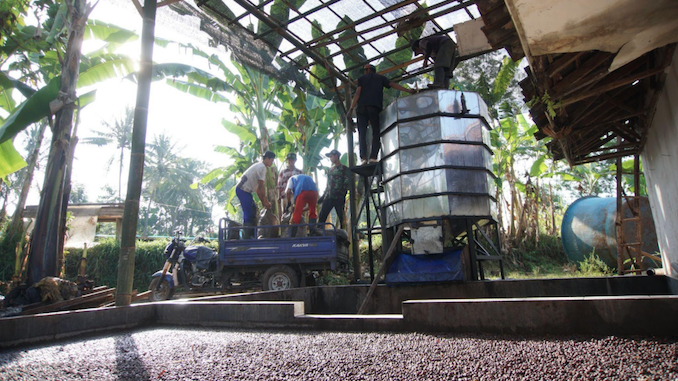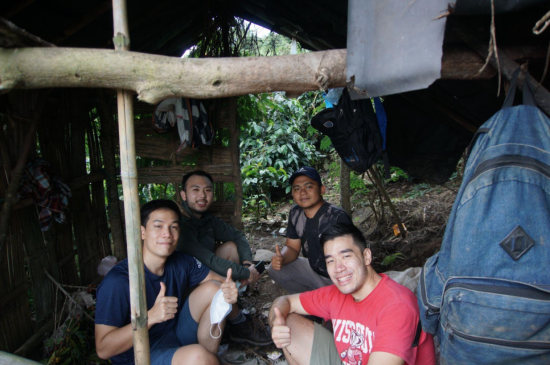
The regions of this longtime coffee-growing nation are revving up their efforts to produce specialty coffee for local and foreign consumption.
BY SUNGHEE TARK
SPECIAL TO BARISTA MAGAZINE ONLINE
Photos courtesy of Ivan Hartanto
When I first started in specialty coffee, one of the first coffees I got to taste on a cupping table was Indonesian coffee. I clearly remember the smokey, herbal, and almost spicy coffees that were so complex, and laced with flavors that were quite different from other Central American and African coffees also present on the table.
As my career path and passion took me to Central America, the frequency with which I saw Indonesian coffee decreased. But that changed when I returned this winter to Seoul, one of the several hubs for great Indonesian coffee.
In the past few years, the number of specialty-coffee shops offering Indonesian coffee has visibly increased in Seoul. I heard similar anecdotes from friends in North America. After having cupped one of the most mind-blowing coffees from Indonesia in a cupping session held in Seoul, I had to chat with a friend to learn more about the changing landscape of coffee production in Indonesia. Ivan Hartanto leads the growing company Belift that exports Indonesian coffee to roasters around the world, and lent his insight for this article.

Indonesia as a Coffee-Growing Origin
In 2019-20, Indonesia was the fifth-largest coffee producer in the world, with 6,334,000 sacks of 60kg bags. Producing about 5% of the world’s coffee, Indonesia’s producing regions, Sumatra, Java, and Sulawesi, are well-known amongst coffee lovers globally.
Of this percentage, the Arabica variety accounts for only 25% of the nation’s coffee production. Nonetheless, the specialty industry in recent years has been exploring the nation’s true potential of producing higher-quality coffees. For some regions of the world, this may still come as a surprise. For someone in a growing café community, the chance of seeing Indonesian coffee on a manual brew list in a specialty-coffee shop—compared to coffees from Colombia, Honduras, or Costa Rica—is relatively low.
Yet, according to Ivan, the landscape is changing quite rapidly. He shares that the market’s interest in high-quality coffee from Indonesia has grown, and it has led to strong interest amongst producers to tap into this growing market segment.
“More and more young people are taking up the role of milling in the coffee industry,” he says. “Especially here in Java, I’m seeing an increasing number of younger people moving back from cities after college education as they see some potential in the coffee market. This small but growing number of young community leaders are interested, and capable of investing in upgrading their milling processes because they have access to YouTube, Instagram, and posts by Sasa Sestic (laughs),” shares Ivan.
In addition to the demographic change that contributed to the changing landscape that he sees, especially amongst groups of producers that he works with in Java, Ivan notes that the growing market interest has coincided with the growing availability of great quality coffee.
“For the last 20 years or so, there’s been a lot of investment in Sumatra, Mandailing … from big companies such as Starbucks, Olam amongst others. Those were seedlings, and infrastructural investments that we are now enjoying the fruit from,” Ivan says.
On “Indonesian Flavors”
Wet-hulling, or giling basah, coffee is distinct to Indonesia, and is different from wet-processed coffees that some mistake for wet-hulled processes. Wet-processed coffees (and various other types of processes) are dried and stored in parchment until they reach the 11-12% moisture level, and only hulled before the exportation/sales.
Wet-hulled coffees on the other hand, as the name suggests, are hulled after two to three days of drying in the sun. Almost 10-20 days fewer days in the sun means that the moisture level can be anywhere between 20-25% around the time coffee is being hulled, and can result in a vastly different cup profile. Some suggest that the wet-hulled process contributes to what we often associate with Indonesian coffee: strong bodied and smoky flavors.
We will continue this article tomorrow.
ABOUT THE AUTHOR
Sunghee Tark (she/her) is the co-founder of Bean Voyage, a feminist organization that collaborates with smallholder womxn coffee producers to build an equitable coffee value chain. She is also a freelance coffee writer, Specialty Coffee Association LEAD Scholar, and Re:Co Fellow.

